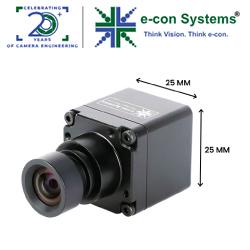Automation Advancing the Pharmaceutical Industry
Morphological Approaches in Medical Technology
WPI and Albany Medical College Developing Robotic System to Treat Brain Tumors
Interview with Michael ImObersteg, Future Robotix
How Artificial Intelligence and Robotics Improve Patient Care
Soft Multi-functional Robots Get Really Small
Ultra-Short Pulse Lasers Are Great Tools for Processing Plastics for Medical Devices
Argon Medical Addresses High Labor Costs and Productivity with MiR Robot
Neuroscientists Create Prosthetics to Help Amputees Feel Again
Carnegie Mellon Designs Low-cost, High-Efficiency 3D Bioprinter
Robotic Technology Goes Beyond Automation
Advancement of Robots in Medicine
What's Driving Investments in Surgical Robots?
Lending A Hand - Or Four: How A New, Four-Arm Robot Will Forever Change Neurosurgery
How Robots Are Changing the Way We Do Surgery
Records 46 to 60 of 98
First | Previous | Next | Last
Featured Product

Darsi Pro - AI Compute Box based on NVIDIA® Jetson Orin™ NX
Robotics and Automation - Featured Company

